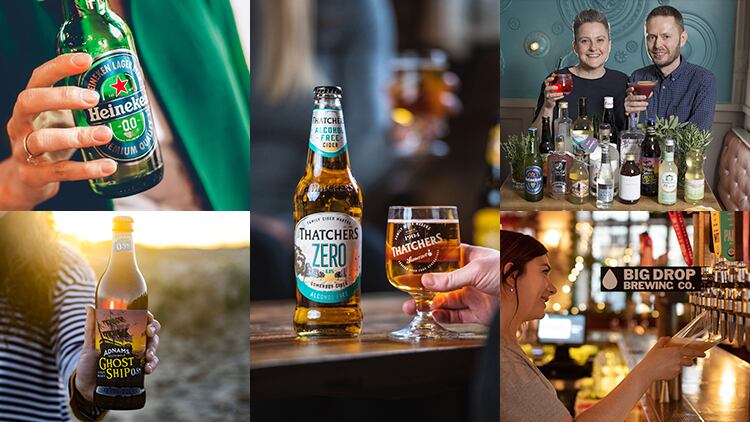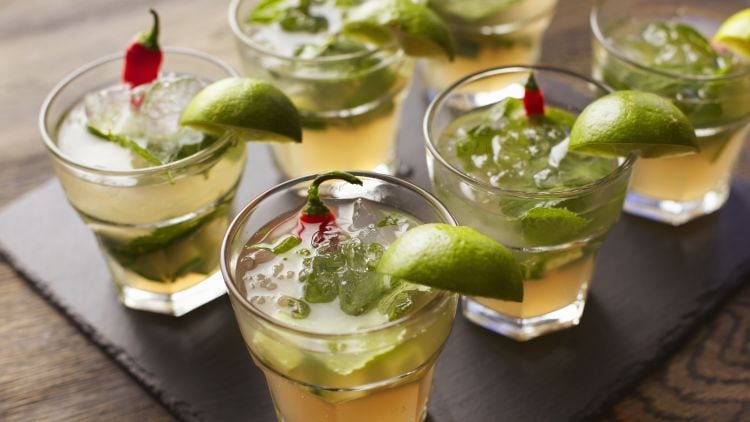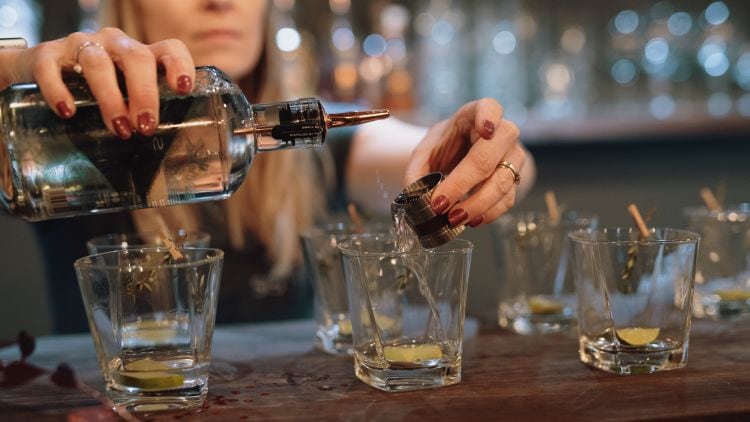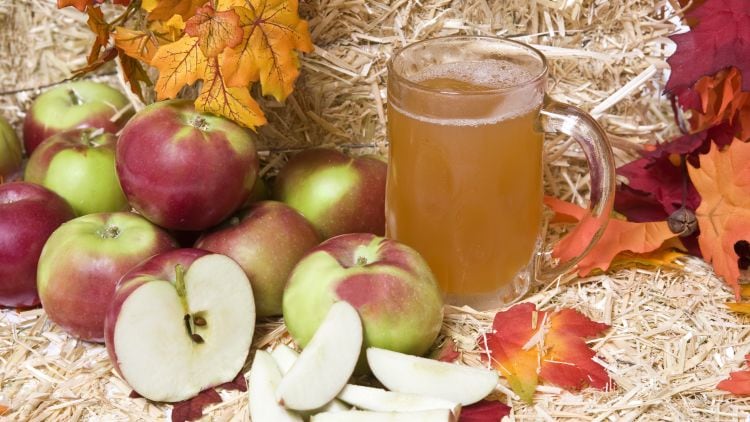Kindly sponsored by

Thatchers – take a look at Thatchers Zero Cider

Adnams – Check out the Ghost Ship 0.5% ABV bottles
Quick link key to sections
The clientele frequenting pubs may well be detoxing but it is also a chance for people who want to make the most of a pub’s atmosphere without suffering the hangover the day after. As the need to diversify grows ever greater for the survival of pubs, don’t forget the world of low or non-alcoholic beverages is no longer just a soft option or tap water, there’s a huge collection of drinks that meet the needs and demands but it’s about what you need to do take advantage of what’s on offer.
Laura Willoughby MBE, who is the founder of Club Soda, a mindful drinking community that has grown from a small Facebook following about seven years ago, says although January can be a quiet time for pubs and bars, it gives licensees the chance to review their drinks offer, bring new customers to your venue and train your staff in the latest low and no-alcohol drinks trends. She describes it as “an excellent investment” in a bid to boost your sales all year round because mindful drinking is not restricted to January only.
Review your stock
On the subject of reviewing your range, she says: “January is a great time to take a look at the adult low and no-alcohol drinks you have behind the bar, how you signpost customers to them and how you present them proudly on your menu.
“There are some key questions to ask: on which occasions will people be drinking alcohol-free drinks? Is it, for example, at lunchtime and weekday nights? Are there ways you can nudge your customers to upgrade from a soft drink or tap water to something more interesting (and better for your bottom line)? Do your beer and wine with meal offers have an alcohol-free alternative too? Make sure you create the same experience for all your customers, whether they are drinking alcohol or not. It will make a big difference to how much they spend overall and whether they will come back to your venue again.”
Back to the expanding range of choices for those avoiding alcohol, Willoughby says there are so many new alcohol-free beers, wines, ciders, and spirits that have launched in the past 12 months. She adds: “There will likely be something that suits your venue’s brand and will make for an exciting feature on your menu to surprise and delight your customers.” And if you don’t know where to start then visit Club Soda's alcohol-free off-licence in central London or read below for a plethora of options that may suit your pub’s needs.

Use your creative juices to invent an experience or event that unlocks the category to your customers. Willoughby says: “With alcohol-free spirits being a premium experience, people understandably want to try them before they buy. An alcohol-free spirit tasting or a cocktail masterclass are events people enthusiastically purchase tickets for. Find a local Instagram mixologist, get one of your team to organise the event, and put the dates in your diary. Don’t forget to offer the events for local businesses too as a fun and healthy team evening out. Many companies have wellness weeks for their staff in January. You could even pair the drinks with an inspiring healthy food menu or curate an alcohol-free wine and cheese tasting evening.”
And don’t forget with the expanse of range taking place every day, there are probably local brands that you could turn to and do each other a favour by showcasing such drinks. Willoughby explains holding a mindful drinking day or weekend at your site gives you the opportunity to invite such brands to show off their goods in terms of samples and create sales too. It will also give your team a chance to sample some new options for your menu.
Training is key
Training your staff to consider upselling customers from a water or cola to a premium alcohol-free drink gives your employees a new skill and a boost to profits. Willougby explains: “Use January to set new targets for the team and learn how to upsell low and no to your regulars. You can access the Club Soda online venue managers and staff training for free through many alcohol-free brands – so ask the brands you have behind the bar for access.
“If your team members are taking part in not drinking alcohol in January or thinking about moderating how much they drink, they have access to our How to Drink Mindfully online course for free, thanks to The Drinks Trust. It is an excellent way for your staff to get into the mindset of non-drinking customers and get some tips and tricks to help them remain healthy while working with alcohol.”
Cider
ADVERTISEMENT
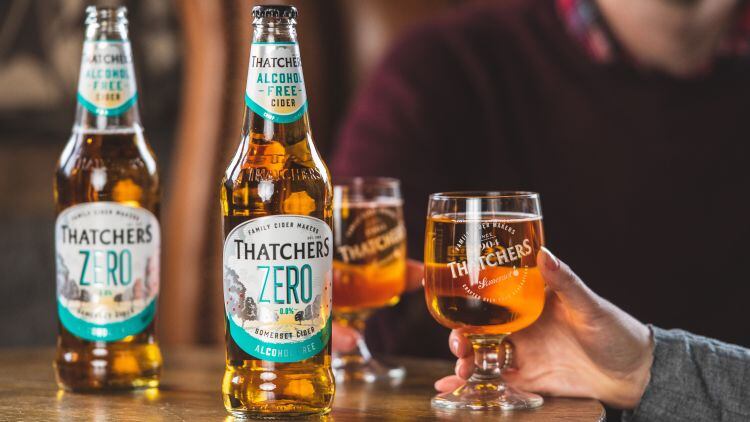
How to quench your customers’ thirst for alcohol-free cider
Premium no and low-alcohol drinks are becoming such an important part of the drinking occasion. The category is attracting more drinkers than ever before, with 24% of consumers saying they don’t drink alcohol**, this trend prevalent in the 18-24 year old age group.
By adding Thatchers Zero, the UK’s #1 alcohol-free apple cider*, to your bar, here’s how to tap into the occasions that will boost your sales and help drive footfall in quieter periods.
- Serving Thatchers Zero will tap into parts of the day that typically have a non-alcohol focus. For example, we’ve seen an increase in the bottomless brunch, and by including a premium alcohol-free option you’re being more inclusive for the non-drinkers in a group. Appealing to every member of a group is crucial - lose one member and you could lose the whole booking.
- Create an interesting mocktail menu by recognizing the love of cider cocktails. Offer a mocktail hour at quieter parts of the day – try the Green Heart or Fall of the Apple using Thatchers Zero.
- Alongside an alcohol-free January, Try January is another great way to encourage consumers to try no and low for the first time, increasing the relevance for existing consumers on more occasions.
At its mill in the heart of Somerset, Thatchers has been crafting ciders since 1904. Four generations later, Thatchers is still independently owned and family run, with a passion for making the best quality ciders sustainably. Always putting heart and soul into its ciders, Thatchers makes sure Zero quenches the thirst for drinkers who want a premium experience, delivering on taste in the same way as its alcohol counterparts.
With its crisp, medium dry character and fruity aroma, Thatchers Zero retains the taste and character of a true cider but without the alcohol. So Zero is a must-stock for any pub or bar looking to offer a special premium alcohol-free range, and the first choice for those who don’t want to compromise on taste and enjoyment.
Crafted using a selection of Thatchers’ favourite bittersweet apple varieties, the blend of traditional and modern apples used in Thatchers Zero creates an alcohol-free cider with body, smoothness and character.
*IRI 52 w/e 9 October 2021
**YouGov Poll July 2021
“It doesn’t just have to be January when alcohol-free drinks make the headlines,” says Thatchers Cider on-trade sales director Rob Sandall. “Low and no drinks are now part of regular drinking occasions and alcohol-free Thatchers Zero can meet the need all year round for those looking for a premium low or no cider.”
Sandall explains the fact a drink is alcohol-free doesn’t mean consumers should expect it to be without taste or quality. He claims Thatchers Zero is “driving the category” after creating huge interest from drinkers who recognise it can provide the social enjoyment but without the alcohol.
He adds: “The low and no drinks category accounts for 3.6 million litres in the on-trade (source: CGA). While, as a category, it’s still relatively small, it’s certainly making a lot of noise, deserving the attention of operators. It’s easy to see why there’s a focus on low and no – 24% of consumers describe themselves as not drinking alcohol (source: YouGov Poll). That’s a large pool of potential consumers for pubs to appeal to. When you dig into the detail a bit more, it’s clear to see this trend for moderation is coming from the younger demographics – 30% of 18 to 24-year-olds claim not to drink alcohol (source: YouGov Poll).”
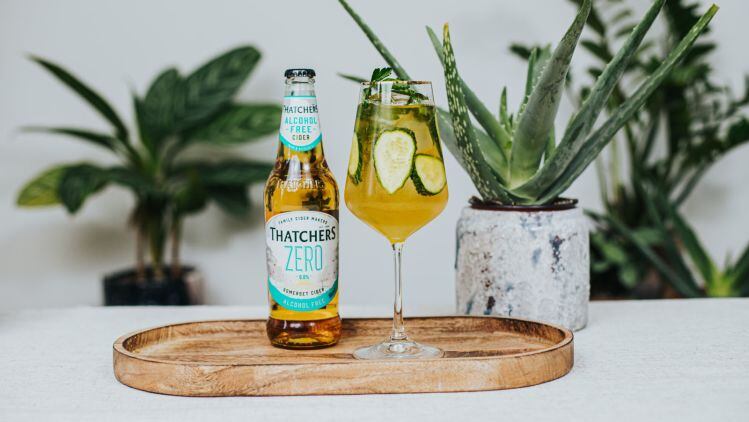
But it’s not just a bid to moderate alcohol intake, there is a growing contingent who are simply drinking more low and no choices. According to UKHospitality and CGA’s Future Shock report, 58% are enjoying a larger volume of no and low choices. This move to moderation has been around for some time now but an increased focus on health and wellbeing during lockdown is believed to have magnified this trend.
“Interestingly, during lockdown, the 18 to 24-year-old demographic was the group cutting down its alcohol intake the most,” says Sandall. “With 30% saying they cut down their intake the past six months to January 2021 (v 23% total adults).”
He also cites further CGA data that showed sales of low and no during January 2020 were 27.9% higher than the rest of the year (excluding December), as consumers are increasingly buying into an alcohol-free January. He adds: “According to YouGov in January 2021, 8% of adults in the UK were planning on participating in an alcohol-free January. We are expecting to see similar numbers in 2022 – perhaps more – particularly within younger adults.”
And why wait until January to break out the alcohol-free drinks? Sandall says: “In December, the alcohol-free category sells 33.4% more volume than the rest of the year (source: CGA) – it’s a really important category for operators to stock and to elevate their range to premium pours. There are three key reasons for this Festive choice: designated drivers are looking for a more interesting choice than regular soft drinks; moderators intersperse alcoholic drinks with low and no choices; and moderators and abstainers use the low and no serve as social camouflage, it’s a way for them to fit in with their drinking friends while still getting a premium drink experience.”
Deliver on flavour and experience
He adds any operator’s alcohol-free options must deliver on flavour and experience and says the focus on creating the ideal drink in Thatchers Zero has been paramount. According to UKHospitality and CGA’s Future Shock report, 61% of consumers want a better choice of non-alcoholic drinks. He concludes: “With Christmas being the season of trade-ups, premium low and no and mocktails will be popular for non-drinkers.”
Another cider on the market, sporting 0% ABV and organic credentials is Maison Sassy Organic. Imported from Normandy, France, this product is set to hit UK shores in December so could be an option for an alcohol-free January.
The business says it has used a wide variety of apples, grown in its family’s orchards, many of them very ancient. Each apple variety has been chosen for its own special flavours and the attributes it will add to the blend. It has been made using five different apple varieties, all native to Normandy. These apples are exclusively cider apples, rather than an eating or cooking apples, and Massy says this brings a complexity that allows the traditional cider drinker to enjoy this with zero qualms about its flavour.
Meanwhile, Heineken UK on-trade category and commercial strategy director John Gemmell says: “Old Mout Berries & Cherries Alcohol Free is the no1 no and low alcohol cider in the on-trade, distributed in more than 5,000 outlets. It commands a higher RSP than soft drinks, making it a great way of unlocking additional category value and a must-stock for operators. As consumers remain category loyal, this popular alcohol-free option is an ideal way to entice cider drinkers looking to moderate, making them feel part of the social occasion.
“Not only is Old Mout Berries & Cherries Alcohol Free made using natural flavours, suitable for vegans and gluten free, it has the same great taste as its alcoholic counterpart. Stock this popular alcohol-free option to meet consumer demand.”
Beer
“January can be tough but there’s a couple of simple things outlets can do to support sales," says Fergus Fitzgerald, production director at Suffolk pub operator and brewery Adnams. “Highlight your low/no offer, don’t make customers ask what you have, make sure its clear either in the menu, menu boards and on the bar.
“The quality of low and no drinks is great but we still treat them as a last resort or a distressed purchase. We need to give them as much prominence as the alcoholic drinks on the menu.”
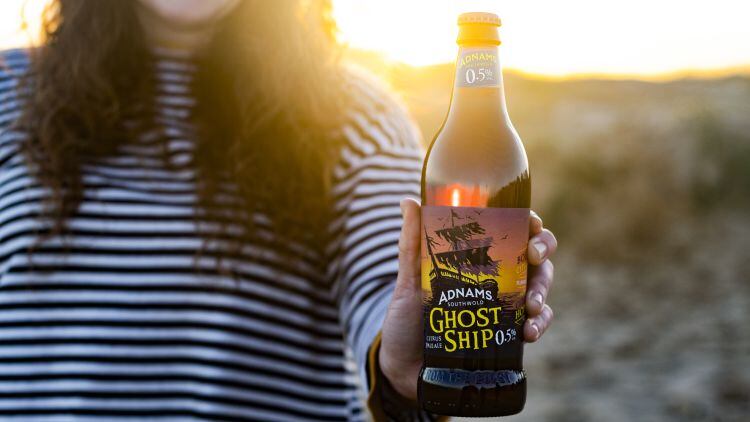
Fitzgerald adds a draught offer is great options, such as its Ghost Ship 0.5% ABV Citrus Pale Ale, which operators can purchase via keg. He says having the keg font on show will inevitably increase sales of low and no drinks, and advertises that it's available, allowing the customer to enjoy the beer as they normally would an alcoholic version. And don't limit your low and no-alcohol beer choices to just one, particularly in bottle, because there should be a choice of styles just as there are when it comes to alcoholic alternatives.
Adnams trade marketing manager Jacqui Harris says: “January has often been a challenging time for the hospitality industry, but this year we are hopeful the growth seen in the no and low-alcohol category from 2021 multiples will shift also to the on-trade. We’ve seen the no and low market up 21.5% in value sales in the off-trade this year, with nablab (non-alcoholic beers and low-alcohol beers) ales growing faster that lager (up 40% versus up 19%) (source: Nielsen 52 w/e 09.10.21). Our own Ghost Ship 0.5% ABV Citrus Pale Ale, grew ahead of the market (up 23% in value sales), remaining the No.1 nablab ale in the East of England and we are working hard this January to continue building awareness of the product and support on-trade sales.”
Click here to learn more about Adnams Ghost Ship 0.5% ABV bottles.
Best-selling beer
Heineken UK is a big advocate of no and low-alcohol drinks and has noted a health kick by Brits trying to live cleaner lifestyles and a boom in the market in recent times.
According to CGA statistics, the no and low alcohol sector was in 36% growth and worth £94m (0.6% share of total beer and cider) in the UK and £8m in Scotland at the start of last year. Heineken says Covid-19 has accelerated this trend and with increased time being spent on health and wellness, moderation and the demand for no and low alternatives will likely continue to rise across all demographics. It adds now is the time to review your no and low offering and adjust your range accordingly.
Heineken UK on-trade category and commercial strategy director John Gemmell says a third of UK adults are now moderating their alcohol intake, according to Alcohol Change UK and as health and moderation become more prevalent in drinkers’ lives, no and low alternatives are becoming a must-stock feature – it is now worth £45m in the on trade alone, states CGA figures.

He says Heineken 0.0, which has been ranked the No1 no and low-alcohol beer in The Drinks List – top brands to stock in 2022, “caters to the 65% of UK adults proactively trying to lead a healthier lifestyle”. He adds: “With fridge space at a premium, stocking Heineken 0.0 delivers twice the rate of sale than other big brands in this segment (source: CGA). Or, with 90% preferring draught to bottled beer (source: CGA), consider stocking Heineken 0.0 on draught via SmartDispense Blade.
“Through Star Pubs & Bars, we saw that stocking Heineken 0.0 in both packaged and draught format delivers 133% uplift in volume sales versus selling packaged alone (source: SPB proprietary data 2018-19), so this is a great option for those with more space. Your customers remain category and format-loyal so having a non-alcoholic beer on draught alongside its alcoholic alternative drives inclusivity and encourages greater sales all-round.”
Different approach
Craft brewer Big Drop was founded by Rob Fink but what is the business’s ethos? Fink says: “The first time I ever met my brewer, I said, what I want to do is make a great-tasting alcohol-free beer. And he said no… what we want to do is we want to make a great-tasting beer that happens to be alcohol-free.
“We don't remove the alcohol from our beer, we just brew it to 0.5% ABV. I think that's what stands us in good stead as against alcoholic brands that are bringing out alcohol-free versions of their iconic drinks.”
Fink says people are drinking less alcohol and they want healthy options. He cites pubs with vegan options on the menu – something that would never have happened 20 years ago. Similarly, every Easter for circa 25 years, Fink and his mates would go for a curry at Easter and everyone would be drinking Cobra beer but as responsibilities have grown and the need for a hangover is ever less welcome, it will be people like himself who will lead the charges to a pub post-meal. And, as vegans often do so for food, Fink chooses a pub with good alcohol-free beers options because that pub will, inevitably, have a good enough selection of alcohol for those who do want to imbibe.

Fink says: “I sort of like a dry January – it is helpful to us but we don't really pull out all the stops in January, because we view our beer as a year-round product.
“But notwithstanding that, obviously, plenty of people decide to abstain in January. But guess what, you can still have a beer, that's not a problem. But for pubs, they can find it quite difficult in January because people are abstaining and it’s about people not spending money as well, isn't it?
“But people need to be reminded they can pop into a pub and you’ve got Big Drop beer on draught you can have a few beers and a burger. It seems to me that if you've got a month in the year where a decent chunk of the population is not drinking alcohol, it would be sensible to give those people a reason to come to your venue. And that would be great-tasting alcohol-free options, including beers.”
Healthy lifestyle
New to the UK market, Athletic Brewing Co is a US brand offering two sub-0.5% ABV variants: Run Wild IPA and Upside Down Golden Ale.
Bill Shufelt, founded the business in 2017, with awarded craft brewer John Walker. Shufelt says: “For us, enjoying a healthy lifestyle has always been an important part of our lives. I used to attend a variety of sporting events, weddings, and other social occasions that were filled with flavourless alcohol-free options. It was clear that there was a gap in the market so I teamed up with John to create a drink that would give people an option to commit to their healthy lifestyle and not miss out on the refreshing craft beer experience.”

Run Wild IPA is a session craft beer that uses organic Vienna malt and a blend of five northwest US hops, that is said to result in an approachable bitterness and classic piney, citrusy aroma with a subtle, yet complex malt profile. Upside Dawn Golden Ale is claimed to be a light-bodied, refreshing and balanced golden ale brewed with organic Vienna malt paired with a combination of English and American hops that add earthy, spicy and citrusy character.
There are plans to add All Out Stout to the UK range in the coming weeks. It is made with Vienna malt, and a variety of hops and oats, which are said to result in a full-bodied mouthfeel and a pleasantly roast finish with delicate coffee and bitter-sweet chocolate notes.
Packs a real punch
Butcombe Brewing Co (part of Liberation Group) has marked its foray into the no and low drinks market with the launch of its first draught and bottled low-alcohol product – Goram IPA Zero (less than 0.5% ABV).
Said to mirror the company’s original Goram IPA recipe, Goram IPA Zero is claimed to be an easy-to-drink and refreshing ale made with a blend of English, US and New Zealand hops that balance stone fruit, citrus and bitter notes. It is named after Bristol’s legendary giant.
Marc McGuigan, group managing director, brewing & distribution, Liberation Group, says: “Very often low alcohol ales can lack substance but our Goram IPA Zero packs a real punch. We’ve developed and tweaked the recipe and brewing process to ensure those wishing not to consume alcohol are able to enjoy a draught or bottled beer, which is authentically produced and flavoured.”
Butcombe says that, according to IWSR Data, the no and low market is predicted to grow by 34% by 2024 and it is expected that overall alcohol volume consumption in the UK will decline by 10% in the coming year.
McGuigan adds: “The no and low market is only going to grow in popularity as consumers demand more choice. It’s important for us as an award-winning brewery to ensure we’re part of this growing trend and create innovative products we know our customers are going to love. Goram IPA Zero fits into our drinks portfolio perfectly and adds a new dimension to our offering.”
Goram IPA Zero is available on draught and in 330ml bottles.

Another option to stock your bar is Innis & Gunn’s 0.0% ABV version of its award-winning Innis & Gunn Lager Beer.
It was launched in October 2021, and has been brewed at 0.0% without producing or removing any alcohol from the process. The company claims this innovative new method is rarely used and helps create a beer that’s as close as possible to its 4.6% ABV parent.
It uses the same varieties of Styrian Goldings and Super Styrian hops as the original but are added at slightly different rates. The malts in Innis & Gunn 0.0% vary from the 4.6% ABV recipe by using only pale ale malt as its base, instead of a blend of lager malt and ale malt.
The 0.0% brew has also substituted flaked oats for the golden naked oats of the 4.6% because the flaked oats are said to bring smoothness to the zero percent Lager Beer whilst giving some additional body to the beverage – a characteristic not often needed in standard lager. A final element of the recipe was a small amount of roasted barley for adding some golden highlights to the beer.
Room for premium options
Premiumisation in the no and low category has become a big factor according to Jean-David Thumelaire, on-trade sales director at Budweiser Brewing Group.
He says: “The pandemic accelerated a shift in consumer preference for premium and super-premium beverage options. For the first time ever, the premium and super-premium category is the biggest in absolute volume, making up 40% of total beer consumption in the On-Trade compared to core lager (31%) and ale and stout (27%) (source: CGA Brand Index 17.07.21).
The trend towards premiumisation is also replicated in the no and low category. The premium no-and-low beer category grew 23% year on year (source: Nielsen Answers 11.09.21) as consumers look to treat themselves whilst moderating their alcohol consumption.
Brand is the most important factor for pubgoers when deciding which no and low product to buy – ahead of calories, ingredients, taste claim and ABV (source: NAB Consumer Drivers of Choice), cementing the opportunity around premium no and low options.
Budweiser Zero and Stella Artois Alcohol Free are both premium options that build on the success of their parent brands. Both beers have proven a hit with consumers, growing significantly ahead of the total no and low category and showing double-digit growth (source: Nielsen Scantrack 27 Feb 2021).
January, while traditionally a slower time for pubs, is a great opportunity to bring new consumers through the door by offering an exciting range of no and low alcohol drinks. Yet the opportunity around no and low alcohol products extends beyond January. Moderation has become a lifestyle choice for many, and this plays out in the drink they’re choosing. One in 10 beer drinkers now regularly opts for an alcohol-free alternative (source: Kantar Worldpanel). While a relatively small driver of revenue for pubs, stocking and promoting a strong no-and-low offering all year round can punch above its weight in terms of driving customer loyalty.”
Health kick back on
Meanwhile, Ben Lockwood, marketing manager – on-trade at BrewDog, says while health took a back seat for many during the lockdowns, it is firmly back on the agenda and 2021 saw 6.5 million people take part in an alcohol-free January, up from just 3.9 million in 2020, according to a YouGov survey, so it expects the growth of alcohol-free to continue into 2022.
Research BrewDog commissioned with Kam Media highlighted 74% of pub and bar customers would consider buying alcohol-free beer, if it was available. It also highlighted that alcohol-free beer has the potential to drive an additional £72m to the channel by driving uplift across all key performance measures, including: 20% increase in visiting occasions, 16% increase in footfall across different days and day parts, 26% increase in party size, 18% increase in frequency of visit, 18% increase in spend per visit and 25% additional dwell time.
Price, taste and availability have previously been the biggest barriers to consumption of low and no alcohol products and with significant investment into quality, marketing and education, meaning there is now more choice than ever before, without having to compromise, says the Scottish-based brewer and bar operator.
Lockwood says 20% of English adults now class themselves as non-drinkers, however, sales of low and no alcohol are being driven by current alcohol drinkers looking for an alternative to enable them to be more responsible.
He adds: “As we continue to focus on the quality of product, there is an increased focus on draught as the preferred serve, with BrewDog Punk AF, our core product within the channel. In fact, 53% of all pub and bar customers say that AF beer on draught would make pubs a more appealing place to visit and would encourage them to purchase (source: Kam Media/BrewDog). Additionally, 51% of alcohol-free drinkers are frustrated that AF beer on draught is not available at their local.
“More than one in three of all pub and bar customers say this is because AF beer on draught is better quality, better value for money and ultimately provides a better drinking experience than in a can or bottle (source: Kam Media/ BrewDog). This provides a huge opportunity for pubs and bars, with AF beer on draught providing the potential to deliver an additional £53m to the channel (source: Kam Media/ BrewDog).
Mark Bentley, on-trade category controller at Molson Coors Beverage Company, explains the number of people moderating their alcohol intake has increased gradually over the past four years (source: Kantar Worldpanel) and, with over a third now saying they are trying to moderate their drinking (source: Kantar Worldpanel), it is important to offer a balanced range that caters for this.
He adds this should include a varied range of soft drinks, as well as low and no-alcohol beers and ciders, such as Doom Bar Zero, a 0.0% ABV amber ale.
“Look at highlighting your low and no-alcohol range using menu boards and specific hero products and make the most of your chiller space for appealing bottles to catch the eye of beer and cider drinkers looking for an alcohol-free alternative,” he says.
Meanwhile, alcohol-free beer brand Lucky Saint is partnering with Alcohol Change UK to become the UK’s first official beer of Dry January.
Lucky Saint said its mission to “inspire the world to drink better” throughout January and beyond would help people with their physical and mental health, which remains high on the agenda following the pandemic and directly correlates with sales of low and no-alcohol beer rising 58% in the UK in 2020 (source: Management Today).
Lucky Saint, which is available in bottle, can and on draught, was launched via draught in January 2020. Luke Boase, founder of Lucky Saint said: “We believe the greatest reward of drinking is the social connection, not the alcohol. So while January is traditionally a month of hunkering down, it now means we can stay social, support the hospitality industry and drink January dry.”
Alcohol Change UK chief executive Dr Richard Piper added: “Dry January offers an outstanding experience to everyone who takes part. It’s not about giving something up, it’s about giving ourselves new choices, resetting our relationship with booze, and improving our physical health and mental wellbeing.”
Wine
Often a 12% to 14% ABV serve, wine is another beverage that doesn’t have to be associated to consumers of alcohol. Potential alcohol-free offers could include Belle & Co 0% ABV Sparkling Rosé – a vegan and gluten-free option that has fewer than half the calories of a typical sparkling wine (22 kcal per 100ml). Its makers say: “This vibrant sparkling rosé demonstrates a clean textured palate with length and freshness. These bubbles are very fine with a streaming effect and elegant mousse. Containing only naturally occurring sugars, Belle & Co. bubbles taste like a wine and not like a soft drink.” It is said to pair well with feta, veggie skewers, salmon and seafood with breads and pastries.
There is also a Sparkling White sister wine to the rosé with the producer adding it is: “A carefully crafted alternative to traditional alcoholic sparkling wine, this is a delightfully refreshing drink with a generous head of bubbles made from a finely balanced combination of sparkling grape juice and premium tea infusion.”
La Gioiosa 0.0% BV alcohol-free sparkling wine is claimed to have a “a very pale straw yellow colour, with a fine and persistent stream of bubbles. The wine has an intensely fruity aroma reminiscent of acacia and wisteria flowers, with clear hints of ripe golden apple, exotic fruit salad and citrus fruits”.
Meanwhile, non-vintage white wine Vallformosa is another 0% option said to be: “Pale yellow, clean and bright. With initial aromas of white fruit, like pear or apple that ripens through the aromas of banana, this sparkling wine finishes with tropical and exotic aromas like pineapple or mango, leaving a delicate and long-lasting aftertaste.”
Spirits
Everleaf, which is described as “complex non-alcoholic aperitifs” could be a great alternative to spirits at your pub or bar without the alcohol.
Everleaf founder and bar operator Paul Mathew says: “To some, an alcohol-free January conjures up images of penitence and restraint; of glasses of water and lime & soda. Boring if you’re a customer, potentially distressing if you’re a bar owner like me – a shock to the till after nice cash flow throughout December.
“There’s another way of looking at it though – an opportunity for people to indulge in a different way; for us to offer them things that are so tasty, maybe they decide to start coming out on ‘non-drinking nights’ for the rest of the year. That’s why we’re pushing for ‘Delicious January’ with Everleaf this year – to show people they can have an exciting and fulfilling drinking experience without the alcohol.”
Mathew says no one would deny having a good vegetarian and vegan menu helps improve your overall profitability and the same goes for drinking in that having a greater choice means your pub or bar will appeal to more people.
He adds: “Since we’ve had a good non-alcohol selection at our venues (more than three years now), we’ve seen bookings and spend increase earlier on in the week. If anything, we should see an alcohol-free January as an opportunity to showcase what we can offer year-round, as a recruitment tool to say ‘we take everything we do seriously’.
“Most people drinking non-alcoholic drinks aren’t non-drinkers, they’re just people that happen to be not drinking (alcohol) at that moment. Guests who want high-quality non-alcoholic drinks are the people who love flavour and they'll be the ones who come back for your best wines, beers and spirits on another occasion too.”
Ingredients sourced with care
Everleaf’s drinks are made with carefully sourced ingredients to give the “best flavours”. From Spanish saffron and Madagascan vanilla in its Forest drink, to fermented Japanese cherry blossom in its Mountain beverage and crisp Italian bergamot in the Marine variant.
Meanwhile, Campari Group UK’s marketing director Sandra Brunet says January is a time where consumers can hit the reset button when it comes to their lifestyle, with cutting down on alcohol a common new year’s resolution.
According to Alcohol Change UK, more than 6.5 million adults participated in Dry January in 2021, an increase of 3.9 million compared to the year before.
Brunet says: “With one in five of people who drink alcohol looking to reduce their intake or cut it out of their diets completely (source: Alcohol Change UK), bars and pubs must ensure they have a strong alcohol-free selection on the menu. By serving a premium alcohol-free alternative, venues can also look to capitalise on those customers looking to replace an alcoholic beverage without compromising on taste, quality or experience.”
Crodino, a new Italian non-alcoholic aperitivo, is said to tap into the demand for a growing no and low-alcohol market by offering a “premium and elevated serve that provides a great option for the 61% of consumers that intended to discover a new no and low-alcohol brand in 2021; and bartenders should prepare for similar interest in the category in 2022”. (Source: IWSR study 2021)
Brunet adds: “To increase awareness and inspire customers to purchase a non-alcoholic option in a pub or bar this January, bartenders should consider creating an easily accessible alcohol-free January menu.
“To encourage greater spend in-venue, pubs and bars should look to create non-alcoholic ‘moments’ – such as Crodino paired with small side dishes like olives or cheese to create a non-alcoholic aperitivo moment this January.”
Brunet says Crodino is unmistakably bitter-sweet and holds strong aromatic notes that give a surprisingly complex taste. The sparkling serve continues to respect the original recipe featuring a blend of 15 high-quality spices, herbs, and roots – sourced from around the world – including nutmeg, coriander seeds, clove buds and cardamom.
Premium softs
According to Coca-Cola Europacific Partners’ senior trade communications manager Amy Burgess, 28% of people abstain from drinking alcohol (source: YouGov survey) all year round and this time last year, almost one in 10 people in Great Britain were planning to take part in an alcohol-free January.
She says: “This has resulted in an alcohol-free January growing in popularity every year. Pubs should see this as an opportunity to grow their soft drinks sales and ensure they have a range of options to cater for those who are not drinking alcohol, but who still want to go out.”
Sparkling soft drinks enjoyed on their own can offer an alternative to beer, wine, mixed drinks and cocktails, explains Burgess. For many, an alcohol-free January is part of a new year health kick so venues should ensure their range includes plenty of low and no-sugar options, like Coca-Cola Zero Sugar and Diet Coke.
“Premium drinks are a key driver of growth in soft drinks, as consumers look for more indulgent choices. In fact, 60% of consumers look to treat themselves when they go out to eat and drink (source: CGA). Adult soft drinks like Appletiser should form a core part of operators’ ranges to make sure they are offering a selection of more premium options for those choosing not to drink. Appletiser offers a sparkling alcohol-free option to sparkling wine.
“A recent survey revealed 58% of people think a crisp, refreshing taste is one of the most important aspects of an adult soft drink (source: CGA). Made with pure fruit juice, and with no added sugar, Appletiser delivers on taste and is particularly appealing to health-conscious consumers. It can be enjoyed on its own or as a base for non-alcoholic cocktails.” Other mixers for non-alcoholic cocktails include Schweppes Pink Soda and Slimline Elderflower.
Kombucha is gaining popularity
Another soft drink that has made itself noticed during the past few years has been kombucha. One brand keen to make a difference is Good Earth. which produces kombucha, energy drinks and teas. It says starting the new year on a healthier note means pubs would be wise to offer easy-to-serve soft drinks.
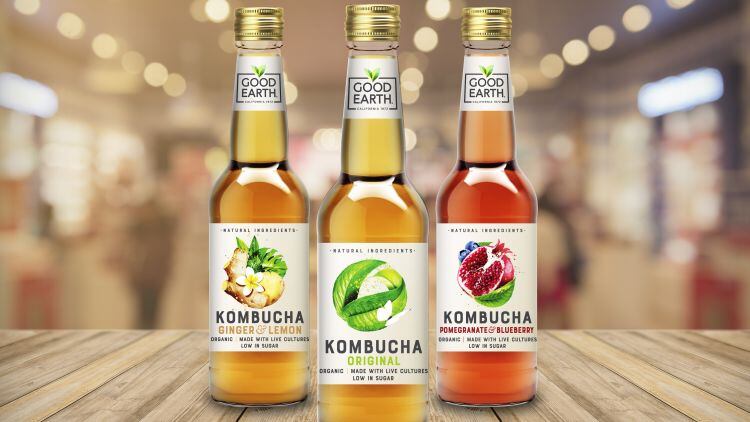
Good Earth Kombucha says Kam Media research shows 36% of 18 to 24-year-olds are drinking less alcohol than they did before Covid, and 98% of these plan to continue to moderate their drinking.
The company said kombucha is today one of the fastest growing sectors in soft drinks, worth around £16m in the UK and estimated to grow to £53m by 2023 (source: AC Nielsen data). The drink is particularly popular among younger drinkers and is becoming more familiar in pubs and bars pepping up their drinks offering.
“People are much more mindful and health aware and this is influencing food and drink choices,” says Liliana Jaurequi, brand manager for Good Earth. “Increased popularity of plant-based diets too is enhancing appeal of drinks with natural ingredients.”
Good Earth’s drinks range includes three kombuchas and two all-natural energy drinks, alongside a range of expertly blended black teas, fruit infusions and green teas.
Meanwhile, Ben Queen-Fryer, chef and owner of the Dog & Gun, Skelton, near Penrith, is the creator of a range of sodas made to decades’ old family recipes.
Armed with his culinary knowledge, Queen-Fryer set about adapting his family recipes so customers at the Dog & Gun could enjoy artisan, hand pressed, naturally brewed sodas, rather than settle for the “usual syrupy synthetically flavoured soft drinks that are served across the country”.
The Queen-Fryer’s drinks range currently includes two soda flavours. Currant Cola is made with blackcurrants, ginger, cinnamon, lavender, coriander seed and star anise, which are said to add a depth of flavour rounded off with a subtle hint of ginger making it ideal for pairing with hearty stews, beef, lamb, game and cheeses.
The Cumbrian-based manufacturer’s second variant is Grapefruit Soda, which is made predominately with pink grapefruit, a hit of ginger, a pinch of cloves and a subtle hint of tropical lime to round off the finish. It is said to pair well with leafy salads, fish, chicken and pork dishes.

